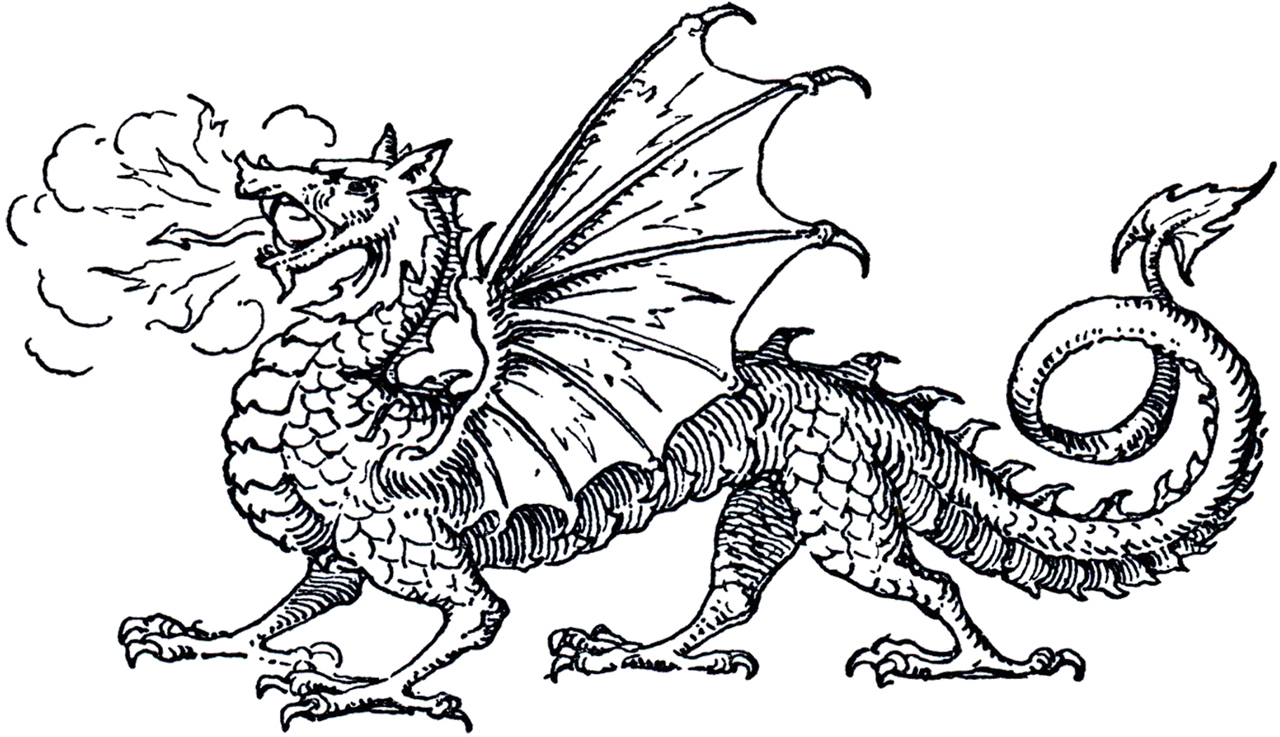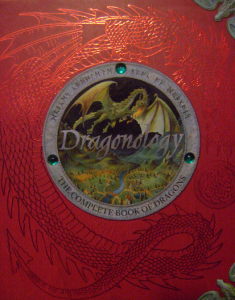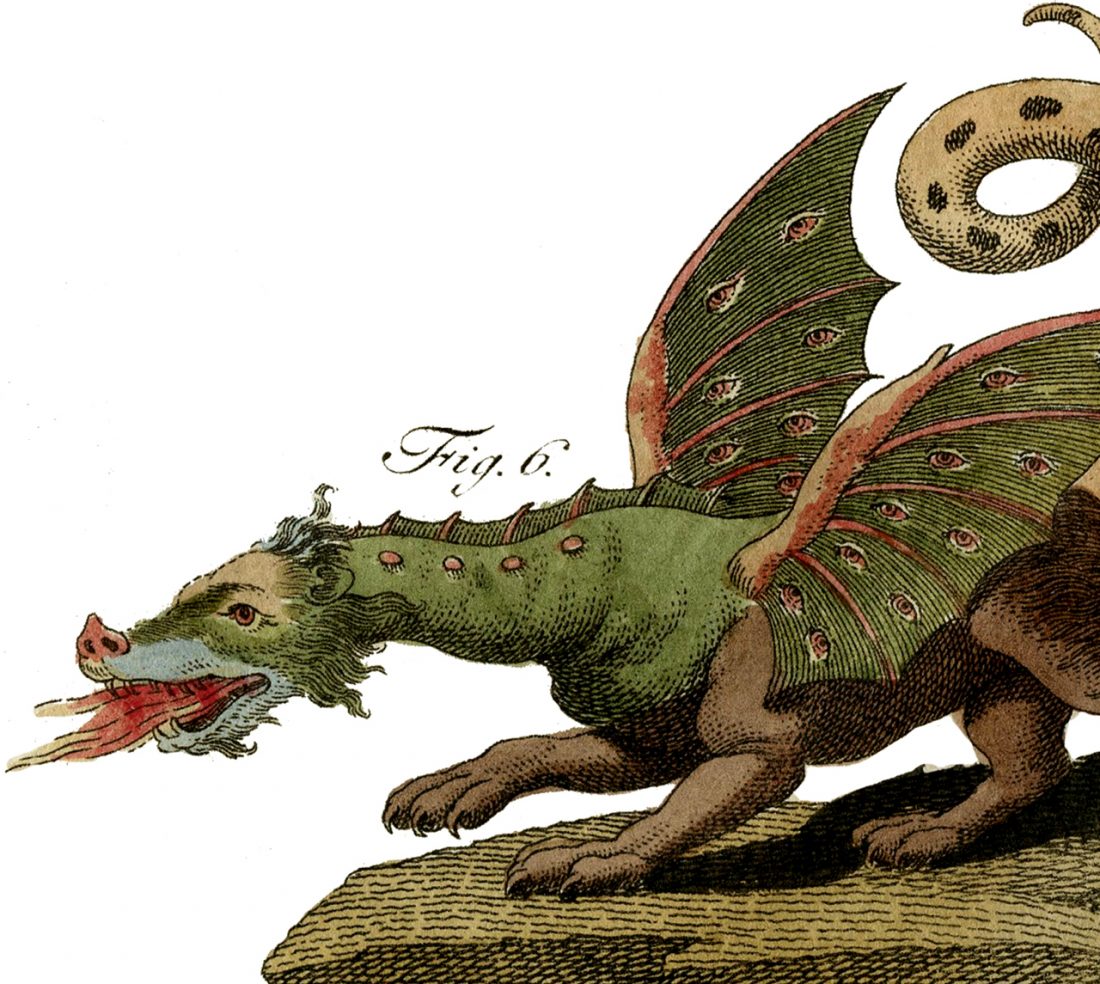A Thunder of Dragons – Creatures of Myth and Magic
Imagine a creature with the body of a huge scaly lizard, the reflexes and attitude of a cat and a mind as keen and clever as any man’s. This is the magical reputation of dragons.
Dragons are the stuff of legend and inhabit the myths of cultures all over the world. They show up in Medieval fairy tales and other more ancient writings and in the latest installments of popular culture. They show up in many fandoms and even have fans of their own. They are part of the traditions of countries from the most far of the Far East and the most western edge of Western society. The interesting thing is that the legends are very consistent from one story and culture to the next. It is almost as if there is some sort of ancestral memory of dragons. So what do these myths and legends say?
Dragons are described as being large reptilian creatures covered with jewel like scales which sparkle in every color of the rainbow. The scales on their backs are said to be impenetrable leaving only their undersides and eyes vulnerable to attack. Dragons are usually shown with large leathery bat-like wings sprouting from their shoulders. Chinese dragons are depicted as having front and back legs and no wings while other cultures usually picture dragons with front and back legs as well as wings. The Wyvern or Fire Drake is a dragon with two legs and wings instead of front legs. They all have long serpentine necks and bony triangular heads. Their claws are nearly as long as their teeth and just as deadly. A row of spikes protrude from their neck, down their backs and all the way down their long flexible tails. If the front end of the dragon doesn’t kill you the back end might. In legends dragons are reputed to be immortal as long as not mortally wounded.

The deadliest part of the dragon however is it’s mind. They are said to love puns and riddles and are said to challenge their adversaries to match wits with them. A thief might try to win a bit of treasure off of a dragon in a games of riddles but few ever succeed in outwitting a dragon. They are also known to have long memories and to hold grudges. Dragons are said to be vain and susceptible to flattery, and to have the attitude of the most self centered of cats.
Dragons are known for their love of treasure and are said to know every piece in their collections. They are often shown sleeping on top of mounds of gold and treasure. Woe to anyone trying to steal even one piece from a dragon’s hoard. One never knows if they are really sleeping or not.
Many people have remarked at how much the dragons in all the stories resemble dinosaurs. Dinosaur is a word from the Greek meaning “terrible lizard”. Many speculate that dinosaurs might have still been alive in man’s ancient past and that they could breath fire. In 2005 the Discovery Channel produced a special called “DRAGONS: A Fantasy Made Real.” They used CGI animation to explore the science and theories behind the myths and legends. The arrangement of bones and a flap in their throats might have allowed them to throw fire like a flame thrower with no injury to themselves. The interesting thing is that the latest archaeological finds indicate that dinosaurs had feathery wings, not the bat-like ones always pictured on dragons in Medieval manuscripts.
Modern popular culture has given us a long list of stories about dragons. They figure prominently in the Lord of the Rings books and movies, the Game of Thrones series, The Eragon Series, the Merlin series, the Dragon Keeper series from Robin Hobb, and that gaming world favorite “Dungeons and Dragons“. J. K. Rowling describes no fewer than ten separate breeds of dragon in her book Fanstastic Beasts and Where to Find Them and these are just the tip of the dragon’s snout in popular literature.
In spite of their fearsome reputation there is much mention of the use of dragon parts in potion making. Stories mention dragon hearts or heartstrings, dragon’s blood, dragon’s scales and dragon claw. Some of these parts may be a symbolic reference to something else. Dragon’s blood is actually a resin that comes from either of two plants and is used in incense, to make a red ink used in magical spells, as a folk medicine, and in China it is used to make a red varnish.
 The Dragon’s Blood Tree and the resin.
The Dragon’s Blood Tree and the resin.
The dragon is a symbol of wisdom and luck in China and is a minor deity in many other Asian countries. The dragon was also a symbol of paganism in Medieval Europe and the Catholic church wanted very much to slay the dragon of pagan belief that persisted especially in England, Ireland, Scotland and Wales.
And why do we refer to a “thunder” of Dragons? It is a term of venery for a group of dragons on the wing. This is the same tradition of reference that gives us a gaggle of geese, a pride of lions and a murder or crows. A person in polite society was expected to know the correct word for groups of people or animals. An Exaltation of Larks Nov. 1, 1993 by James Lipton is a fun read on the subject.
Reference:
 Dragonology: The Complete Book of Dragons (Ologies)Oct 13, 2003 by Dr. Ernest Drake and Dugald A. Steer is a wonderful introduction to the magical world of dragons.
Dragonology: The Complete Book of Dragons (Ologies)Oct 13, 2003 by Dr. Ernest Drake and Dugald A. Steer is a wonderful introduction to the magical world of dragons.





No Comments